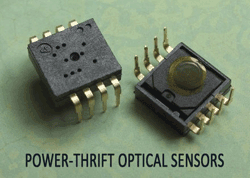For the most part, shoppers would rather have wireless remotes, wireless game controllers, wireless keyboards, and a wireless mouse than the “wired” alternatives. But there is at least one instance when all of that unwired freedom has a cost — when the battery dies.
Just about a week ago, a colleague of mine was working away happily at his desk. His normally cheerful disposition began to sour just a bit as he became more and more annoyed. His wireless optical mouse was dying. The battery nearly gone, his on-screen pointer seemed to lag if it worked at all. He stopped what he was doing and began the required search through drawers, on shelves, and all about for the batteries that would enable him to get back to work.
He found those batteries and was soon back at it, but he was nonetheless annoyed.
My friend, and most of us, hate it when our wireless devices fail. If we have to change the battery more than once in a blue moon, we are even more annoyed and may stop purchasing a particular OEM brand. In this way, I think it is safe to say that consumers (or at least some consumers) may actually judge aspects of product quality by how long a battery lasts.
Avago introduces battery-saving optical sensors
Last week, Avago announced two new LED-based optical sensors, the ADNS-2080 and the ADNS-3000, designed to extend battery life in wireless mouse applications.

In fact, Avago said that its new sensors would last a year or more on a single AA battery. Perhaps, making the experience of having a wireless mouse fail less frequent. In addition to saving power, the new Avago optical sensors include an integrated oscillator, reducing component count, and do not require precision optical alignment, which may make them easier to manage during the manufacturing process.
In my mind, these new sensors are a good example of how semiconductor features or improvements can directly address possible end consumer concerns.
Armando Roggio
Advertisement
Learn more about Avago TechnologiesElectronic Products Magazine





